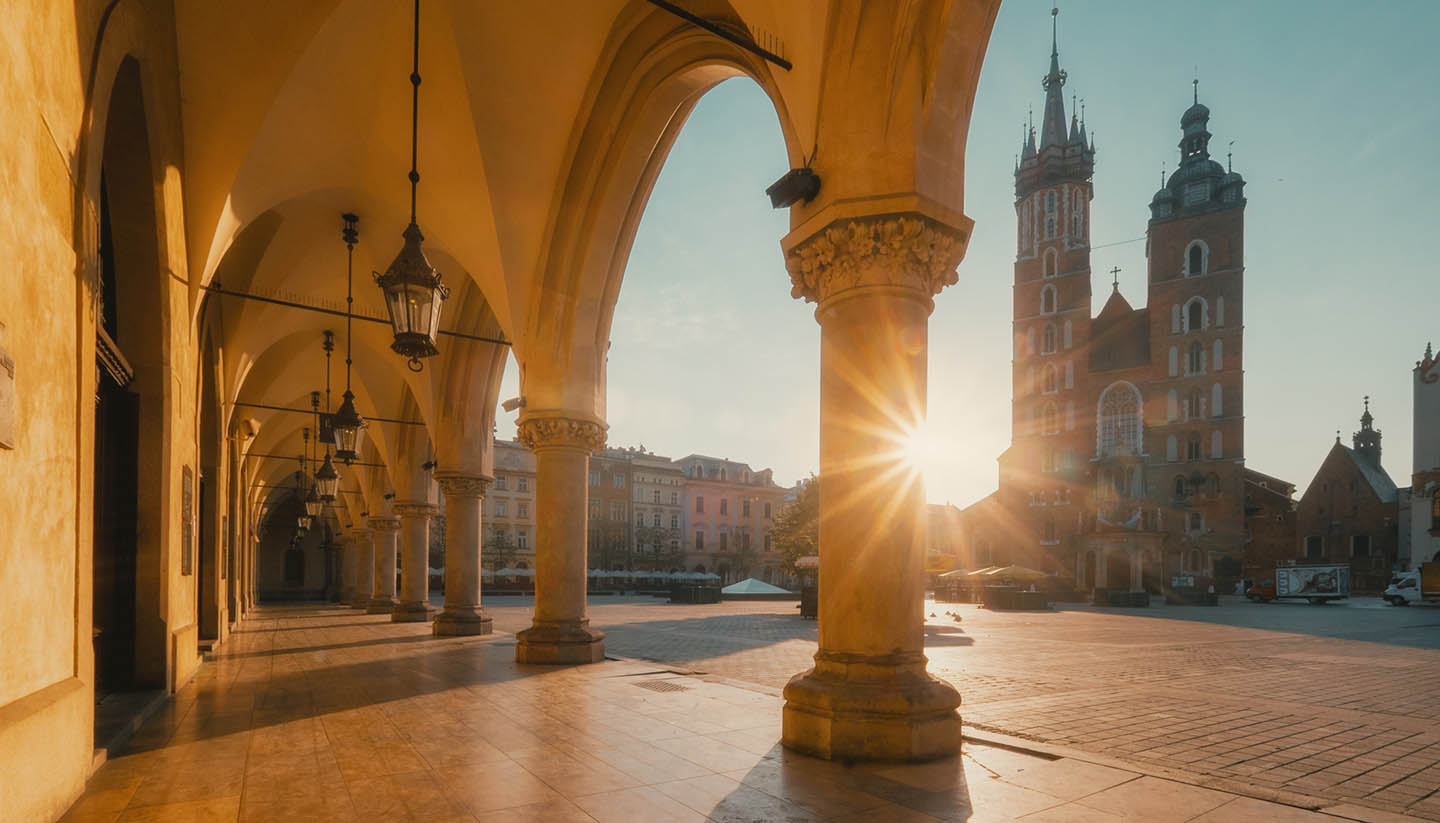Cracow History
Founded by Prince Krak in the 7th century, the city ostensibly came about after the Prince heroically defeated the local dragon, though historians consider the city’s convenient location alongside the Vistula River a more plausible explanation for settlement. Whatever the truth, the city swiftly became a hub for trade and continued to flourish well into the 13th century.
But in 1241, the city almost ceased to exist following a severe beating from the Tatars, who burned it to the ground. Undaunted, within 20 years a new town centre had been built, which included the gorgeous Rynek Glowny square. To the south, the imposing Wawel Castle was erected, in part to prevent a repeat.
Economic prosperity and a cultural boom led to a golden age in the 15th and 16th centuries, during which the affluent nations of Poland and Lithuania merged into a single state. However, this came to an abrupt end when Russia, Prussia and Austria carved up Poland in the Third Partition of 1795, effectively erasing it from the map.
In the 18th and 19th centuries, Poland witnessed a nationalist revival, and by the 20th century, the large eastern European empires had dissolved. Much to the delight of Poles, the Treaty of Versailles declared that Poland was once again a sovereign state, although the country’s new-found freedom would be short lived thanks to the Nazi invasion of 1939.
Under German occupation, the nearby town of Oswiecim was chosen as the site for the largest death camp in the Third Reich, Auschwitz. In Cracow itself, a ghetto was built south of the river in Podgorze, which became the temporary home for the city’s Jewish inhabitants, many of whom were later murdered in the nearby Plaszow camp or at Auschwitz.
With Germany defeated, post-war Poland fell under the sway of the USSR and endured four decades of Communism. Since the fall of the Soviet Union, Cracow has regained much of its past glory. While no longer capital of Poland, its burgeoning art scene has led to it being dubbed the country’s ‘creative capital’ – a title it still holds today.
Did you know?
• Cracow is Poland’s longest serving capital, having done the job for 500 years between 1038 and 1596.
• Astronomer Nicolaus Copernicus, who put the Sun at the centre of the universe rather than the Earth, studied at the city’s Jagiellonian University.
• Only one in four Cracow buildings survived following the 1655 Swedish invasion known as the 'Deluge'.

